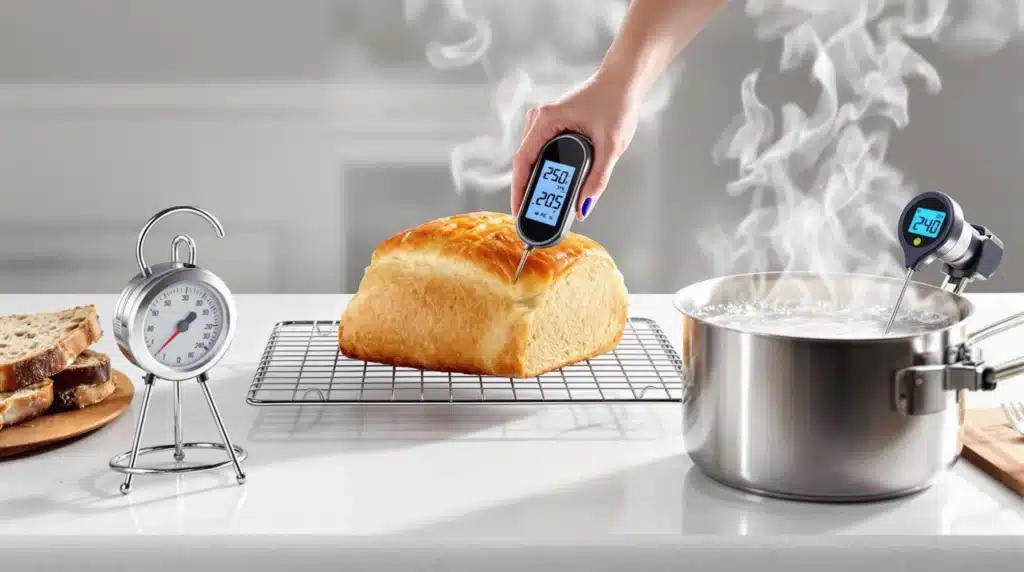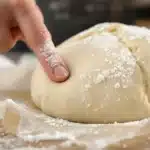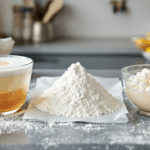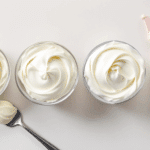Successful baking often feels like a delicate dance between ingredients, technique, and perhaps a little bit of magic. But behind many seemingly magical transformations lies the often-underestimated science of temperature control. We meticulously preheat our ovens, but what about the temperature of our liquids for yeast, the internal doneness of a loaf of bread, or the critical stages of sugar cooking for candy? Relying on guesswork, timing alone, or vague visual cues in these areas can lead to inconsistent results and baking frustration.
While we’ve discussed knowing your oven’s true temperature (a crucial first step!), a dedicated baker’s arsenal of essential gear should extend beyond just the oven thermometer. Understanding and utilizing different types of thermometers designed for specific baking tasks can dramatically improve accuracy, consistency, and safety in the kitchen. From ensuring your yeast thrives to confirming your cake isn’t raw inside, these tools provide invaluable data. Let’s explore the world of baking thermometers and understand why mastering precision heat is key to elevating your baking game.
Beyond the Dial: Why Precise Temperature Matters
Temperature isn’t just about “hot enough to cook.” Precise temperatures influence almost every stage of the baking process in critical ways:
- Yeast Activity: Yeast is highly sensitive. Water or milk that’s too cold makes it sluggish, leading to poor rise. Too hot, and it dies, resulting in no rise at all. Hitting the optimal temperature range (e.g., 105-115°F / 40-46°C for activating active dry yeast) is vital.
- Ingredient Interaction: Recipes often call for room temperature butter and eggs for a reason. This temperature allows fats and liquids to emulsify properly during creaming, trapping air effectively for light-textured cakes and cookies. Using cold ingredients can lead to curdled batters and dense results.
- Chemical Reactions: The effectiveness of chemical leaveners can be temperature-dependent. Furthermore, enzymatic activity within doughs (affecting flavor and texture) proceeds at different rates depending on temperature.
- Setting Structure (Doneness): Proteins (in flour and eggs) coagulate and starches gelatinize at specific temperatures. Reaching the correct internal temperature ensures that breads, cakes, and custards are fully cooked through, preventing gummy centers or structural collapse.
- Sugar Cookery: When making caramels, marshmallows, brittles, or certain frostings (like Italian meringue), sugar syrups must be heated to precise temperatures (e.g., soft-ball stage, hard-crack stage). Even a few degrees off can completely change the final texture of the candy.
- Oven Performance: As previously discussed, knowing the actual oven temperature (not just the dial setting) is fundamental for consistent baking times and proper browning.
Guessing at these critical temperatures introduces a significant variable that can easily lead to failure. Thermometers remove that guesswork, providing objective data for informed decisions.
Your Temperature Toolkit: Essential Baking Thermometers
Think of thermometers as specialized measuring tools for heat. Different tasks require different types:
The Oven Thermometer (Your Oven’s Truth Teller)
We covered this in Oven Insights, but its importance bears repeating as foundational gear.
- Role: Measures the actual ambient air temperature inside your oven cavity while it’s running.
- Why Essential: Home oven thermostats are notoriously unreliable. An independent oven thermometer reveals the true baking temperature, allowing you to compensate for inaccuracies by adjusting your oven’s dial setting. This is the crucial first step towards achieving consistent baking times and results. Without it, you’re essentially baking blind.
- Type: Usually an inexpensive dial-type thermometer made of stainless steel that can hang from an oven rack or sit on it. Choose one with a clear, easy-to-read display covering typical baking temperatures.
- Status: Must-Have Gear. No serious baker should be without one.
The Instant-Read Thermometer (Your Go-To Probe)
This versatile tool quickly measures the internal temperature of foods and liquids. Digital models are highly recommended for speed and accuracy.
- Role: Provides quick temperature readings via a metal probe inserted into the substance being measured.
- Why Essential (or nearly so):
- Yeast Activation: The only reliable way to ensure your water or milk is within the precise temperature range needed to activate yeast correctly without killing it. Eliminates a major cause of rising failures.
- Internal Doneness of Bread: Forget thumping the bottom! An instant-read thermometer provides the most accurate indication that bread is fully baked inside. Lean breads (like sourdough or baguettes) are typically done around 190-210°F (88-99°C), while enriched breads (like brioche or challah) are usually done around 180-190°F (82-88°C). This prevents gummy, under-baked centers.
- Internal Doneness of Cakes & Custards: While the toothpick test works for many cakes, a thermometer can offer extra certainty, especially for denser cakes, cheesecakes (often done around 150°F/65°C), or baked custards (which set within a specific temperature range).
- Checking Liquid Temperatures: Verifying the temperature of milk or cream before adding to eggs for custards (tempering), checking water temp for certain doughs, or monitoring temperatures when melting chocolate.
- Type:Digital instant-read thermometers are vastly superior to older dial-probe types. Look for:
- Fast Response Time: Reads temperature in just a few seconds.
- Thin Probe Tip: Creates a smaller hole in your baked goods.
- Wide Temperature Range: Capable of reading both low (e.g., for yeast liquids) and high temperatures (internal doneness).
- Accuracy: Check manufacturer specifications. +/- 1-2°F or +/- 1°C is good.
- Readability: Clear digital display. Features like hold-reading or rotating displays can be helpful.
- Status: While you can bake without one, it dramatically improves precision and reduces guesswork, especially for yeast activation and checking bread doneness. Strong Nice-to-Have, bordering on Must-Have for anyone serious about baking, particularly bread.
The Candy / Deep-Fry Thermometer (For High-Heat Precision)
This specialized thermometer is designed for accurately measuring high temperatures over longer periods, typically while clipped to the side of a pot.
- Role: Monitors the temperature of cooking sugar syrups, caramels, jams, or hot oil for deep frying.
- Why Needed (for some bakers): Essential only if you plan to make candies, marshmallows, certain types of caramels, nougat, brittle, or frostings like Italian meringue or seven-minute frosting. These recipes rely on heating sugar syrups to very specific temperature stages (thread, soft ball, firm ball, hard ball, soft crack, hard crack), each defined by a precise temperature range. Accuracy is paramount; being off by even 5-10 degrees can ruin the final texture.
- Type:
- Traditional Glass Tube: Filled with liquid (often non-mercury), encased in metal with a clip. Can be less expensive but are fragile and sometimes harder to read accurately.
- Dial-Type with Clip: Features a dial display connected to a long metal probe, with a clip to attach to the pot. More durable than glass.
- Digital Probe Thermometer: Often consists of a digital display unit connected by a heat-resistant cable to a metal probe that sits in the pot. Some instant-read models come with probes suitable for this. Offers easy reading and often includes alarm features.
- Ensure the thermometer has a high enough temperature range (at least up to 400°F / 200°C) and includes markings for common candy stages if possible.
- Status: Nice-to-Have. Only becomes essential if you regularly engage in candy making or recipes requiring precise high-temperature sugar work. Not needed for general cake, cookie, or bread baking.
Using Thermometers Effectively: Tips for Accuracy
Owning thermometers isn’t enough; using them correctly ensures reliable readings:
- Oven Thermometer: Place it where you’ll be baking (usually the center rack). Let it sit in the preheated oven for at least 15-20 minutes after the oven indicates it has reached temperature to get a stable reading. Check it periodically during baking if you suspect fluctuations.
- Instant-Read Thermometer:
- Insertion: Insert the probe into the thickest part of the food, avoiding contact with bone (in meats) or the bottom/sides of the baking pan (which can give falsely high readings). For bread, insert into the side towards the center. For liquids, ensure the tip is adequately submerged.
- Stabilize: Wait the few seconds required for the reading to stabilize before removing the probe.
- Cleaning: Wipe the probe clean immediately after each use, especially after checking raw or cooked foods.
- Calibration: Check your thermometer’s accuracy periodically using the ice water test (it should read 32°F / 0°C in properly made ice water) or boiling water test (212°F / 100°C at sea level, adjusted for altitude). Follow manufacturer instructions for calibration if needed/possible.
- Candy/Probe Thermometer:
- Placement: Clip the thermometer securely to the side of the pot. Ensure the probe tip is fully submerged in the liquid syrup but is not touching the bottom or sides of the pot, as this will measure the pan temperature, not the liquid temperature.
- Reading: Read dial types at eye level. Ensure digital probes are positioned correctly.
- Safety: Be extremely careful when working with hot sugar syrups or deep-frying oil. Avoid splashing. Be mindful of steam.
Temperature Control = Baking Control
Ultimately, incorporating thermometers into your baking routine is about gaining control. Precise temperature management at critical stages allows you to:
- Ensure yeast is active and works efficiently for a proper rise.
- Achieve the right texture in cakes and cookies by using ingredients at optimal temperatures for creaming and emulsification.
- Guarantee breads and cakes are perfectly cooked through without being dry or gummy.
- Bake consistently by knowing and adjusting for your oven’s true temperature.
- Successfully create candies and sugar confections with the correct final texture.
Removing temperature guesswork elevates your baking from hoping for the best to executing with intention.
Conclusion: Invest in Precision Heat
While whisks, bowls, and pans might seem like more obvious baking tools, thermometers are the unsung heroes of consistent, successful baking. They provide crucial, objective information that eliminates guesswork and allows for precise control over temperature-sensitive processes. An oven thermometer is non-negotiable for understanding your oven’s true behavior. An instant-read thermometer offers invaluable versatility for checking yeast liquids and internal doneness, dramatically improving results particularly in bread baking. And for those venturing into sugar work, a candy thermometer becomes essential.
These tools don’t need to be expensive, but the impact they have on your baking reliability is immense. Think of them as essential gear for navigating the science of heat in your kitchen. By embracing these instruments and learning to use them effectively, you move beyond simply following recipes to truly understanding and controlling the baking process. So, “scale up” your precision not just with ingredient weight, but with temperature too – it’s a key step towards achieving consistently “egg-cellent” results.







